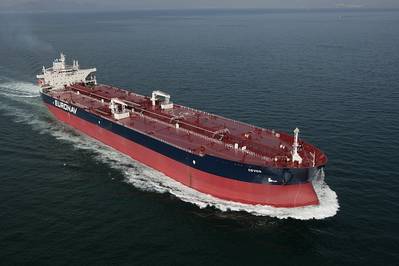Tankship Major Crystal-gazes Interestingly
Euronav, report a trading loss of almost US$ 119-million after tax in year-ending 2012 report, expect oil transportation market to re-balance in 2013.
Prospects for 2013
On the supply side, given the current state of the tanker market and the difficulty most owners face securing financing it is most probably safe to assume very few newbuilding contracts will be placed in 2013. The market also expects fleets to consolidate due to market pressure. Finally and most importantly, the poor market returns for the last 2-3 years, should push owner of relatively old tonnage to scrap their vessels. These three trends should help rebalance the tanker market over time.
For the most part of 2013 but barring any major shift in global economic growth or oil demand, tanker owners are going to continue feeling the pressure from the robust ordering activity of previous years and the loss of once projected demand growth as a result of the financial crisis and subsequent multi year recession.
The outlook for crude tankers is indeed bleak and rates are expected to remain low. However, temporary hikes such as from seasonality of demand are expected to have a positive effect on crude tanker demand, but with less intense and shorter-lived spikes than previously.
Owners could nevertheless improve the situation by beginning to scrap even younger vessels at a faster pace than they are doing today. That would undoubtedly help the market move towards a speedier recovery. Although fleet growth was limited, the large excess supply from previous years combined with high voyage expenses and low freight keeps net rates in the doldrums.
The year 2012 saw a shift in the trading pattern of the crude oil and this trend will continue in the coming years provided the growth of China’s economy remains constant. For the tanker market this will mean a further increase in crude oil import by China, and therefore increased tonne-miles which is positive for the market. A weakening of the oil price would reduce voyage costs and stimulate demand for oil as well as the requirement for both storage and transportation.
On the offshore side, the previous two decades have witnessed a steady rise in the use of production floaters across the globe driven by the increased activity into deeper and more remote waters. Whilst the future of the floating platform market looks strong, significant challenges remain. Although deepwater and ecologically challenging environments are calling for ever-more advanced technologies, with FSO and FPSO demand predominantly driven by countries in Latin America and West Africa, where significant local content requirements exist, construction companies are being increasingly challenged to create employment opportunities for the local workforce. Indeed, over the short-to-medium term this may affect the capital cost and timescales for FSO and FPSO developments.
Despite these factors, the floating platform market remains one of the strongest offshore sectors going forward to the end of the decade. With an increasing amount of floating production investment being made in regions away from the traditional areas of Latin America and West Africa, the next five years look set to witness an interesting change in dynamics within this sector.











